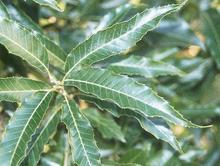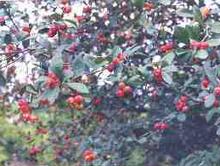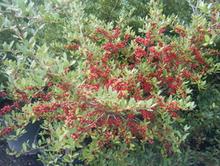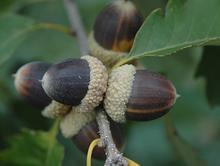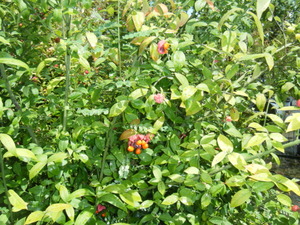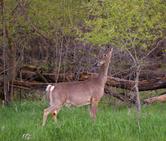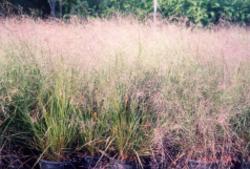Crataegus aestivalis
Eastern mayhaw
Both Eastern and Western mayhaw bear fruit in 4-5 years. Wonderful food source for wildlife, especially birds. Also very popular for making delicious, beautiful rose-colored jelly.
Euonymus americanus
Strawberry bush
Ilex vomitoria
Yaupon holly
Planting for Wildlife
By design, nearly all plants have wildlife value. Refer to this list for some of our favorites for attracting deer, turkey, quail, and many other types of wildlife. Species are available as bareroot seedlings and containerized plants. Containerized plants are available year-round and our bareroot season is mid-November to early March.
Females produce berries in 2-3 years. Bears fruit in the late fall and winter. An excellent food source and shelter for birds. Also greatly valued as an ornamental evergreen shrub.
Quercus prinoides
Dwarf chinquapin oak
Small tree that is an excellent choice for game management. Prolifically produces acorns in approximately 4 years. Tolerates a variety of site conditions.
Quercus acutissima
Sawtooth oak
Fast growing tree that produces large acorns in approximately 8 years. Excellent for wildlife plantings or for ornamental use. Does not perform on dry sand sites.
All of the oak species have good wildlife value, but here are some more exceptional selections and the age at which they produce acorns:
Quercus alba (White oak) large acorns in 15 yrs.
Quercus bicolor (Swamp white oak) 10 yrs. Great for wet areas.
Quercus michauxii (Swamp chestnut oak) apprx 10 yrs.
Quercus nuttallii (Nuttall oak) apprx 10 years. Great for wet areas (ducks).
Quercus pumila (Runner oak) apprx 2-3 years.
Also known as Hearts-a-Bustin. Bears fruit in 2-3 years. Seed capsules open in September to October to reveal scarlet colored seeds, which are very popular among birds. Wildlife also likes to browse the foliage.
More fruit and nut bearing favorites:
Carya glabra (Pignut hickory) produces nuts in approximately 15 years.
Castanea pumila (Chinquapin) produces nuts in 3-4 years.
Cornus florida (Dogwood) produces berries in approximately 4-5 years.
Diospyros virginiana (Persimmon) females produce fruit in approximately 10 years.
Ilex cassine (Dahoon holly) females produce berries in 2-3 years.
Malus angustifolia (Crabapple) produces fruit in 5 years.
Myrica cerifera (Waxmyrtle) good cover for wildlife and berries for songbirds
Prunus angustifolia (Chickasaw plum) produces fruit in 4 years.
Prunus umbellata (Flatwoods plum) produces fruit in 4 years.
All of our bareroot seedlings are one year old and, on average, a containerized 3g will be 2-3 years old. You will find this information useful in determining how long it will be before your plants begin to bear fruit.
Eragrostis spectabilis
Purple lovegrass
Native grasses are another important facet to attracting wildlife to your area. Grasses provide cover and food for numerous species. Grasses are available in 1g containers. Some great additions to any wildlife planting are:
Andropogon glomeratus (Bushy bluestem)
Andropogon ternarius (Split-beard bluestem)
Andropogon virginicus (Broomsedge)
Aristida stricta (Wiregrass)
Eragrostis spectabilis (Purple lovegrass)
Eragrostis elliottii (Elliotts lovegrass)
Muhlenbergia capillaris (Muhly grass)
Schizachyrium scoparium (Little bluestem)
Sorghastrum nutans (Yellow Indian grass)
Sorghastrum secundum (Lopsided Indian grass)
Muhlenbergia capillaris
Muhly grass
The link below provides some useful information regarding fruit seasons and wildlife value
